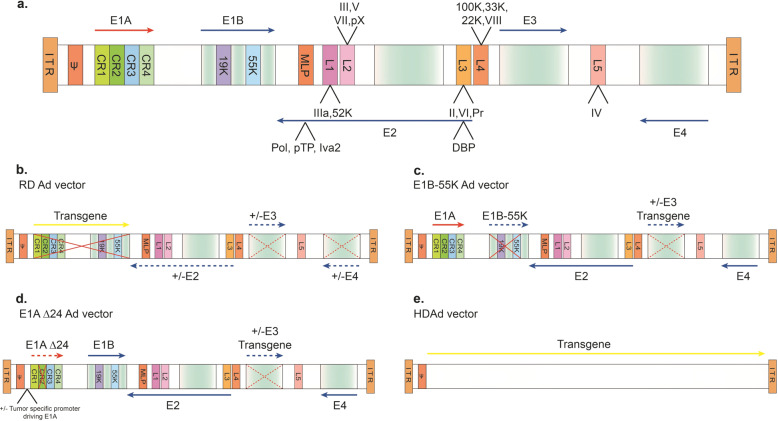Fig. 3. Schematic of the wild-type adenovirus type 5 (Ad5) genome and the genetic modifications of common Ad5-based vectors.
a Diagram of the wild-type Ad5 genome structure. The 36 kb genome consists of four early transcription elements (E1, E2, E3, and E4), five late expression genes (L1–L5), cis-packaging elements (ψ) and two inverted terminal repeat sequences (ITR). The E1A (red arrow) gene contains four conserved domains (CR1-4), each of which interacts with special cellular proteins. The E1B gene encodes for two distinct tumor antigens, the 19 kDa (19K) and 55 kDa (55K) proteins. The E2 gene encodes DNA-binding protein (DBP), terminal protein (pTP), IVa2, and DNA polymerase (Pol). The E4 gene encodes 1–7 open reading frames. The major late messenger RNAs (L1–L5) mainly encode for virion structural proteins and are derived from a pre-mRNA, which is driven by a major late promoter (MLP) via alternative splicing and polyadenylation. L1 encodes for IIIa and 52K. L2 encodes for the penton base gene (capsid protein III) and the core proteins V, pVII, and pX. L3 encodes for the hexon (capsid protein II), capsid protein precursor (pVI), and protease (Pr) genes. L4 encodes for 100K, 33K, 22K, and pVIII. L5 encodes for the fiber gene (capsid protein IV). b–e Diagrams of rAd vectors. b Replication-defective (RD) vector. The E1A and E1B regions are deleted and replaced with an expression cassette containing an exogenous promoter and a transgene of interest (indicated by the solid red X and yellow arrow). The E3 and E4 regions are usually deleted to accommodate larger insertions and eliminates leaky expression of other viral genes. c E1B-55K replication-competent vector. The E1B-55K region is deleted (solid red X and dashed blue arrow), whereas in some vectors, the E3 region is deleted and replaced with an expression cassette (dashed red X and dashed blue arrow). d E1A-Δ24 (Δ24) replication-competent vector. The CR2 region in E1A is deleted (solid red X and dashed red arrow) and the E1A promoter can be replaced with various tumor-specific promoters to drive CR2-deleted E1A expression. In some vector designs, the E3 region is deleted and replaced with an expression cassette (dashed red X and dashed blue arrow). e Helper-dependent Ad vectors (HDAds). Most or all of the Ad genomic elements are replaced with a therapeutic expressing cassette (yellow arrow), save for the cis-packaging sequences (ψ) and ITRs. These vectors are propagated in the presence of an Ad helper vector

